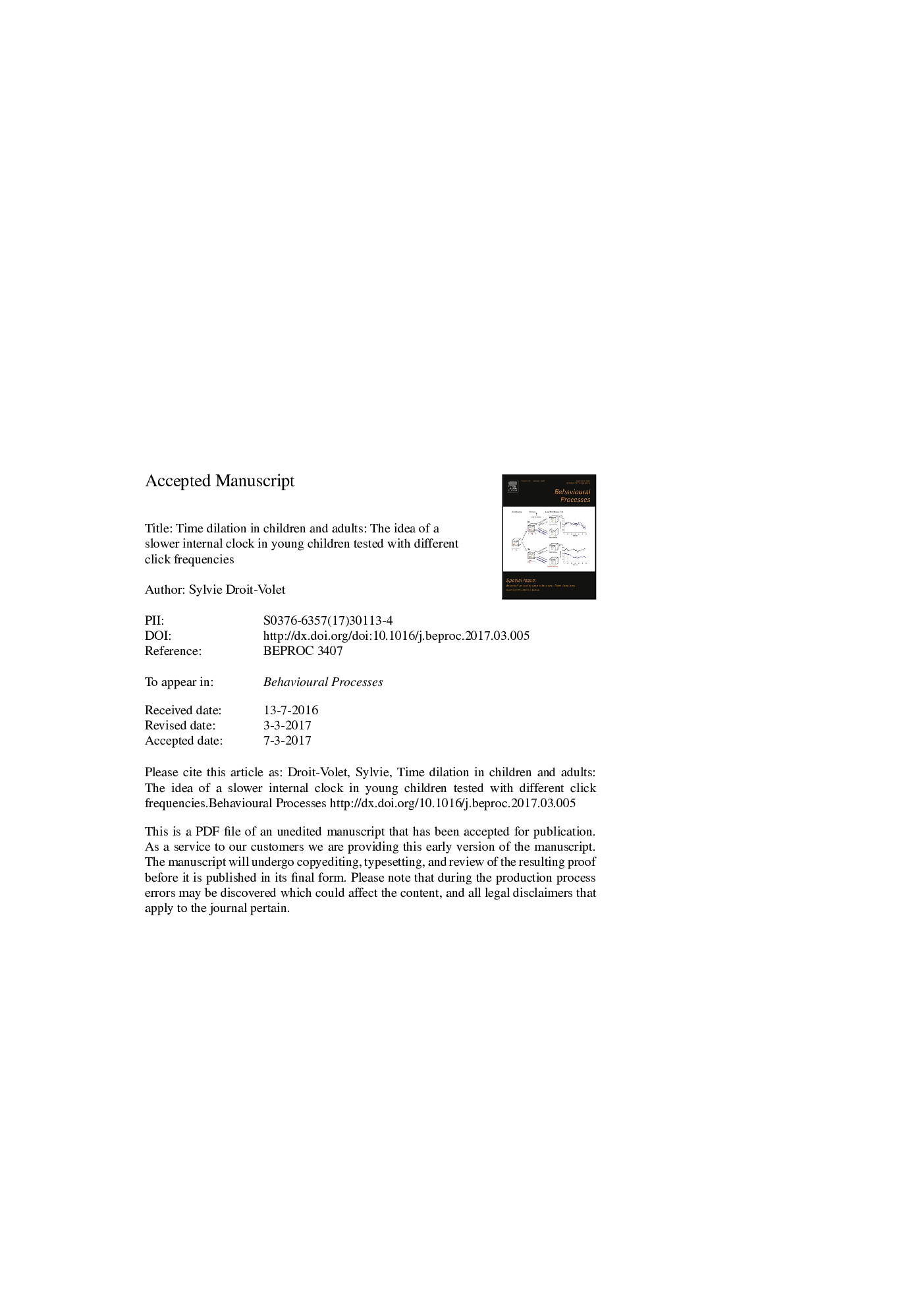| Article ID | Journal | Published Year | Pages | File Type |
|---|---|---|---|---|
| 5539661 | Behavioural Processes | 2017 | 28 Pages |
Abstract
This experiment examined the effect of a train of regular repetitive clicks of different frequencies (8Â Hz, 20Â Hz) on time judgment in a bisection task in children aged 5 and 8 years old and adults with two duration ranges (200/800 and 400/1600Â ms). Participants' scores on neurospychological tests assessing memory, information processing speed and different components of attention control were also measured. The results showed that a train of clicks produced a time dilation in the children as well as in the adults, with the result that the perceived duration was judged to last longer with than without clicks. However, the time dilation reached a maximum level at a lower click frequency value (8Â Hz) in the children than in the adults (20Â Hz). In addition, beyond this click value (8Â Hz), a reversal effect was observed in the youngest children, who responded “long” less often, while the time dilation was extended in the adults. In addition, while the differences in the time dilation between the click and the no-click condition were not correlated with the individual cognitive capacities, those that occurred when the click frequency increased from 8 to 20Â Hz were significantly correlated with individual capacities in terms of attention and working memory. The hypothesis of a slower internal clock in the younger children is discussed as are the attentional interference processes involved in the click effect on time judgment.
Keywords
Related Topics
Life Sciences
Agricultural and Biological Sciences
Animal Science and Zoology
Authors
Sylvie Droit-Volet,
